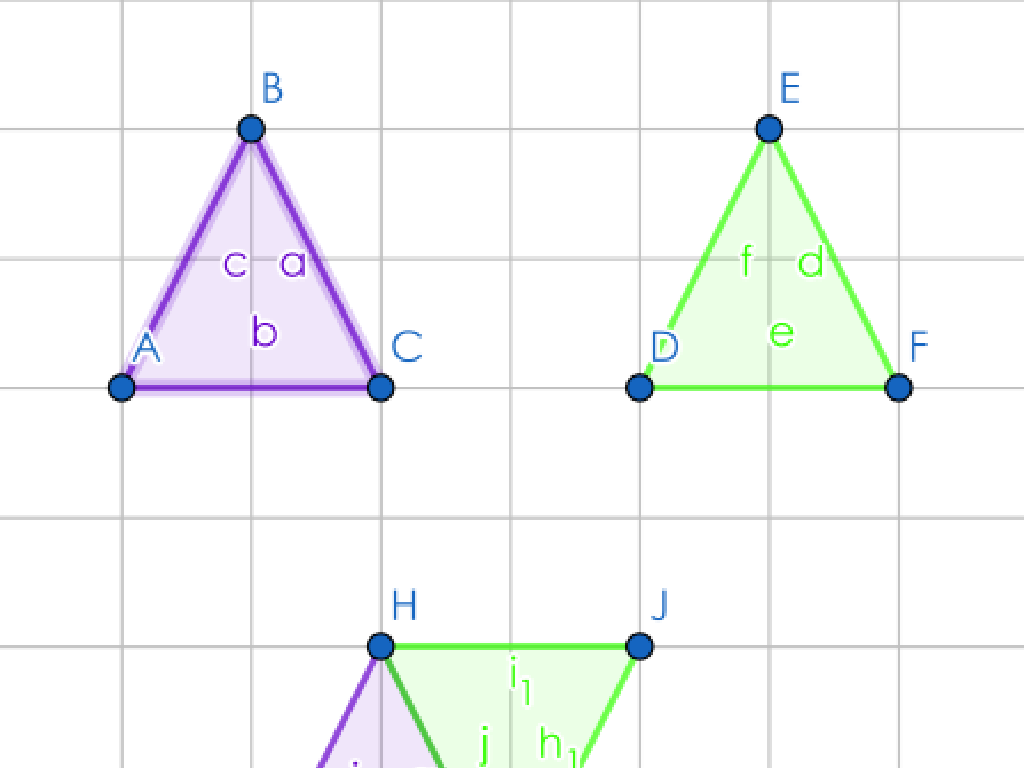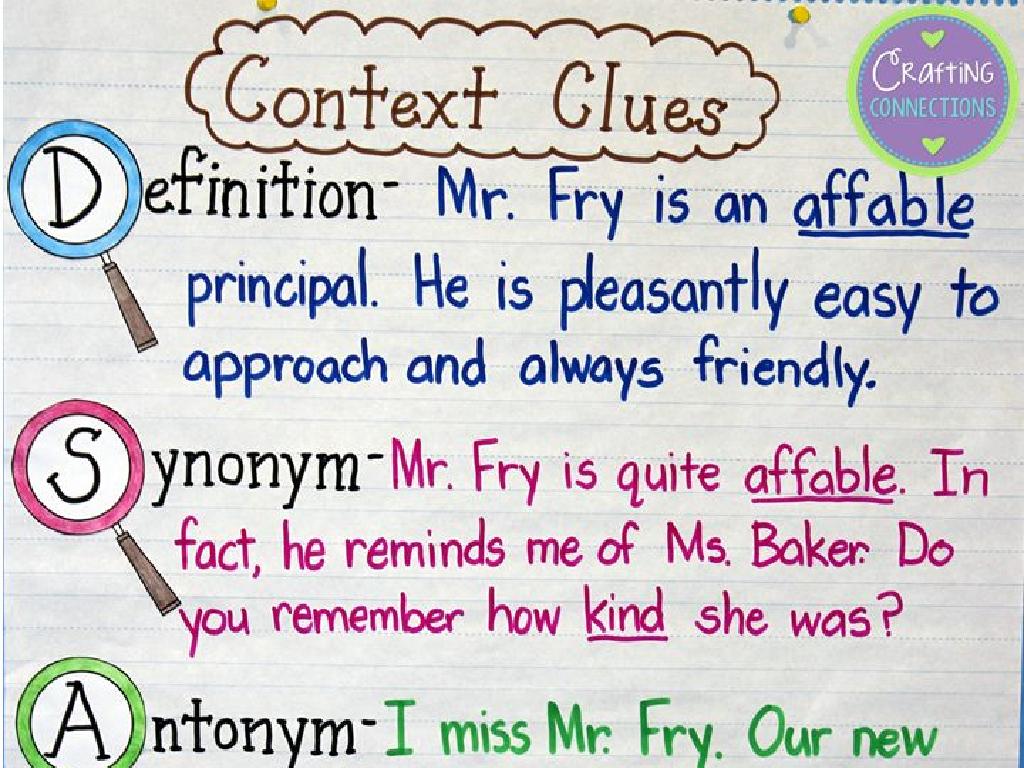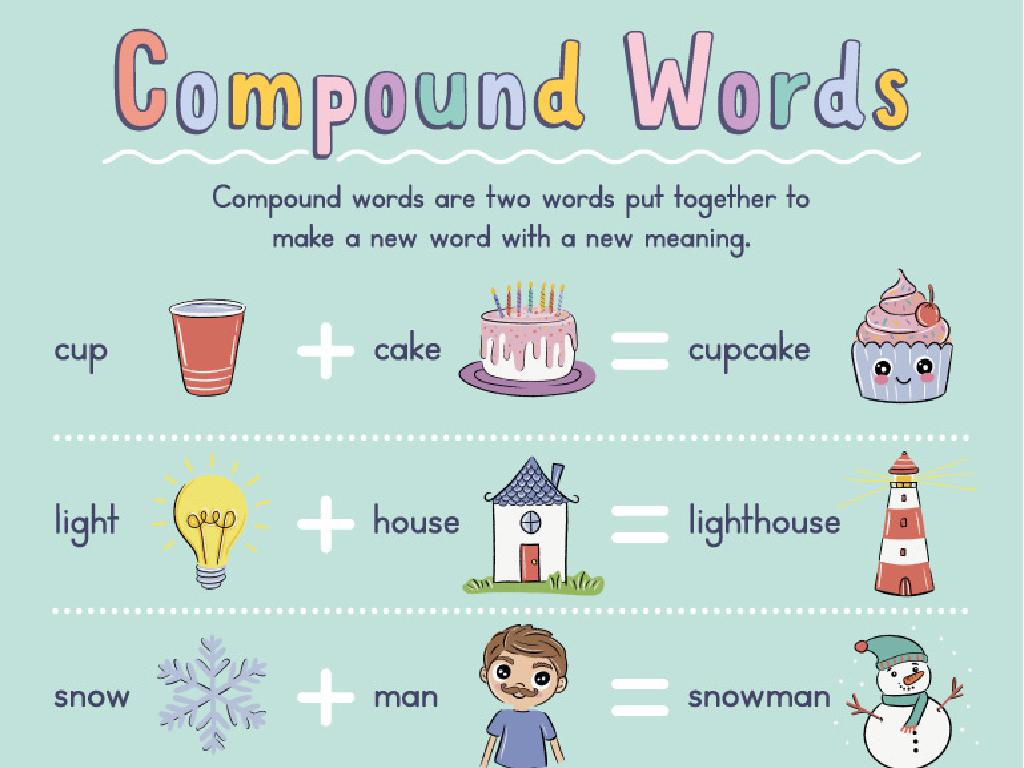Distinguish Characters' Points Of View
Subject: Language arts
Grade: Fourth grade
Topic: Point Of View
Please LOG IN to download the presentation. Access is available to registered users only.
View More Content
Exploring Points of View in Stories
– Learn about story perspectives
– Characters may see things differently
– Like how two friends might describe a game differently
– Recognize varying viewpoints
– Helps us understand their actions and reactions
– Significance of character viewpoints
– Knowing this can explain why characters behave the way they do
|
This slide introduces the concept of point of view in literature, emphasizing its importance in understanding characters’ perspectives. Students will learn that just as people in real life have different opinions and experiences, so do characters in stories. By recognizing these differences, students can gain a deeper understanding of the narrative and character motivations. Discuss examples from familiar stories where characters have different points of view. Encourage students to think about how their own perspective might differ from their peers on various topics.
Understanding Characters’ Points of View
– What is Point of View?
– It’s the perspective from which a story is narrated.
– First Person POV: ‘I’ or ‘We’
– The storyteller is part of the story. Example: ‘I went to the park.’
– Third Person POV: ‘He’, ‘She’, ‘They’
– The storyteller is not part of the story. Example: ‘She went to the park.’
– Recognizing POV in stories
|
This slide introduces the concept of Point of View (POV) in literature, which is crucial for understanding how a story is told and from whose perspective. First Person POV uses ‘I’ or ‘We’ and indicates that the narrator is a character within the story, sharing their personal experiences directly with the reader. Third Person POV uses pronouns like ‘He’, ‘She’, or ‘They’ and shows that the narrator is outside of the story, giving an outsider’s perspective on the events. Encourage students to look for these clues in texts to determine the POV. Have them practice by reading passages and identifying the POV used. This will help them understand characters’ perspectives and enhance their comprehension skills.
Understanding Characters’ Points of View
– Characters have unique views
– Views differ on the same events
– Actions and words reveal views
– For example, one character might be scared of a storm, while another is excited.
– Recognizing different perspectives
– Understanding this helps us see why characters react differently.
|
This slide introduces the concept that characters within a story can have distinct points of view, which can affect how they perceive the same events. It’s important for students to recognize that a character’s actions, thoughts, and dialogue are key to understanding their perspective. An example activity could be to read a short story and then discuss as a class how different characters might feel about a central event in the story. Students could also write a paragraph from the point of view of different characters to practice distinguishing between different perspectives. This exercise will enhance their critical thinking and empathy skills, allowing them to better understand narrative structure and character development.
Identifying Characters’ Points of View
– Understanding character viewpoints
– How characters see the story world
– Clues in character dialogue
– What characters say can show us their feelings and thoughts
– Actions reveal character thoughts
– What characters do tells us about their beliefs and personality
– Reactions to events
– How characters respond to situations gives insight into their perspective
|
This slide aims to help students understand how to identify a character’s point of view by analyzing their words, actions, and reactions within the story. Encourage students to think like detectives, looking for clues that reveal what characters think and feel. Discuss how dialogue can give us direct insight into a character’s thoughts, while their actions and reactions to events can show us their deeper beliefs and attitudes. Use examples from familiar stories to illustrate these points. In the next class, students can practice by picking a character from a book they are reading and presenting their point of view based on these clues.
Exploring Characters’ Points of View
– Read a story as a class
– Identify characters’ viewpoints
– How do characters see the events?
– Discuss influence on actions
– Characters act based on their beliefs and views
– Understand story perspectives
– Different characters may see the same event in unique ways
|
This slide is aimed at helping students understand that characters in a story can have different points of view, and these viewpoints can influence their actions. Start by reading a short story together as a class. As you read, pause to discuss the perspective of each character, asking students how they think the character perceives events in the story. Encourage students to consider why characters might act the way they do based on their viewpoints. Highlight that understanding these perspectives can lead to a deeper comprehension of the story and its themes. Use examples from the text to illustrate how different characters may interpret the same situation in various ways due to their unique experiences and emotions.
Group Activity: Exploring Points of View through Role Play
– Split into groups for role-play
– Present a scene with varied viewpoints
– Each character has their own perspective
– Reflect on point of view significance
– Understanding different viewpoints can give deeper insight into the narrative
– Discuss how it enhances story comprehension
|
This group activity is designed to help students understand that characters in a story can have different points of view, and these perspectives can affect how we interpret the story. By role-playing, students will actively engage with the material and embody the characters’ viewpoints. Teachers should prepare a few scenes from familiar stories for the groups to act out. Each student should have a chance to play a character with a distinct point of view. After the presentations, lead a discussion on how seeing the story from different angles can change our understanding of the characters’ actions and motivations. This will help students grasp the concept of point of view in literature.
Reflecting on Role-Play: Understanding Perspectives
– Insights from role-play activity
– Experiencing different story views
– How did it feel to ‘walk in someone else’s shoes’?
– Significance of various viewpoints
– Understanding others can improve communication and empathy
– Relating to real-life situations
– Discuss how this skill helps us in school, at home, and with friends
|
This slide is meant to facilitate a class discussion reflecting on a role-play activity that helped students understand different characters’ points of view. Start by asking students to share what they learned from the activity. Encourage them to express how they felt experiencing the story from different perspectives. Highlight the importance of understanding various viewpoints, not just in stories but in real-life situations as well. This will help students appreciate diversity in thoughts and opinions, and develop empathy. Provide examples such as resolving conflicts with friends or understanding family members better. The goal is to help students see the value in considering multiple perspectives in their daily interactions.
Understanding Characters’ Perspectives: Homework
– Congrats on learning character viewpoints!
– Read a short story for homework
– Pick a story that interests you
– Note each character’s viewpoint
– How do characters see the events differently?
– Discuss your notes next class
|
This slide wraps up the lesson on characters’ points of view and transitions to a homework assignment that reinforces the concept. Students are tasked with reading a short story, which allows them to apply their understanding of how different characters may perceive the same events in varied ways. Encourage them to consider how the background, feelings, and experiences of each character influence their perspective. In the next class, be prepared to facilitate a discussion where students can share their findings and reflect on how recognizing different viewpoints enhances their comprehension of the story.






